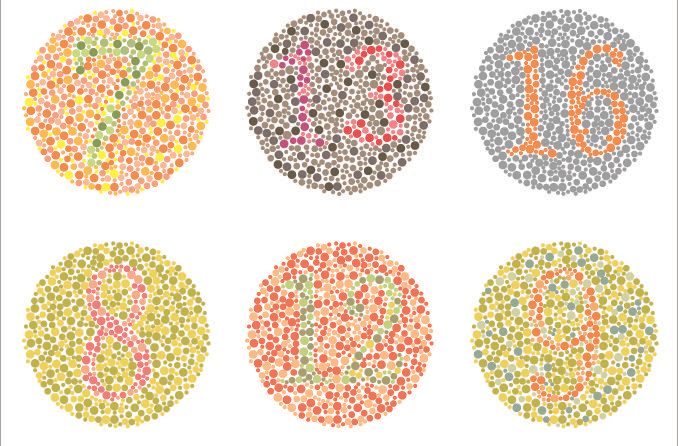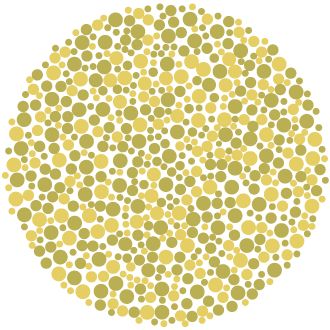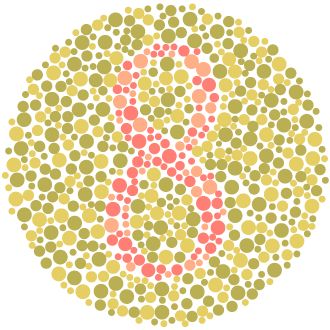Color blind tests: Do you see colors as they really are?

A color blind test checks if you can accurately see colors. If you cannot pass the test, you have a color vision deficiency — also calledcolor blindness.
Color blind tests can identify children who might have trouble recognizing colors. This could be a factor in certain activities in school and at home.
These tests can also identify people who might struggle at jobs that require perfect color vision.
There are two types of color blind tests:
Screening tests that can detect the presence of a color vision problem.
More in-depth tests that can detect a color vision deficiency and measure how severe it is.
Color blind screening tests
A very popular test for color blindness is the Ishihara Color Vision Test.
Shinobu Ishihara, a Japanese ophthalmologist, developed the test more than 100 years ago. It can quickly detect red-green color blindness (the most common color vision deficiency).

Eye doctors use Ishihara plates to screen patients for color vision problems. Someone with a red-green color deficiency may not see the red number in this example.

The Farnsworth Munsell 100 Hue test identifies and quantifies color vision problems. (Image: Macular Pigment Research Group, Waterford Institute of Technology)
The Ishihara test consists of several circular images (or "plates"). Each image contains many dots of various colors, brightness and sizes.
A person who hasnormal color vision will be able to detect a visible number "hiding" within the array of dots.
But someone with red-green color blindness won't be able to see the number. Instead, they will see:
A random pattern of dots, or
A number different than the one seen by a person with normal color vision.
The complete Ishihara color blind test contains 38 plates. A shorter version of the test (with fewer plates) may be used during an eye exam to screen for color blindness.
The screening takes place under normal room lighting. If you need prescription glasses, you will wear them for this test.
If you fail the Ishihara Color Vision Test, your eye doctor will talk to you about what this means for you.
In-depth color blind tests
A screening test may be able to detect color blindness, but a more detailed color blind test is needed to measure how severe the condition is.
The most popular in-depth test is the Farnsworth-Munsell 100 Hue Test.

The Farnsworth Munsell 100 Hue test identifies and quantifies color vision problems. (Image: Macular Pigment Research Group, Waterford Institute of Technology)
This test consists of four trays containing many small disks of varying hues. Each tray has a colored reference disk at one end.
You must arrange the disks in each tray to create a continuous sequence of color change.
This test should take place under room lighting that simulates natural daylight.
Each colored disk has a number on the bottom that enables the tester to compare the results against a key.
This comparison determines the type and severity of color blindness.
A shorter version of the Farnsworth-Munsell 100 Hue Test — called the D15 Test — contains 15 colored disks. Like the Ishihara test, the D15 test is for color blindness screening only.
Online color blind tests
Many color blind tests are available online. Most of these tests are versions or variations of the Ishihara screening test.
Be aware that these online versions may be less accurate, based on the color accuracy of your display.
For the most accurate color vision testing, see your eye doctor.
Who should take a color blind test?
Everyone should take a color blind test at least once in their lifetime, especially if their job depends on it.
Excellent color perception is required for certain technical and manufacturing positions. It's even more important for anyone considering a profession that requires perfect color vision. Examples include:
Commercial artist
Marketing professional
Designer
Electrician
Though there's no cure, people with color blindness lead full and rewarding lives. Specially tintedcolor blind glasses can help some people see colors more accurately.
Page published on Friday, January 3, 2020






